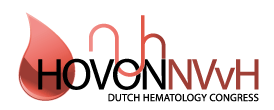Dynamics of Immune Reconstitution in Adults with Sickle Cell Disease undergoing Nonmyeloablative Matched Sibling Donor HSCT: A Conventional and Computational Analysis
Allogeneic hematopoietic stem cell transplantation (HSCT) with a matched sibling donor and alemtuzumab/3Gy total body irradiation (TBI) conditioning is a curative therapy for sickle cell disease (SCD). Despite favorable outcomes, mixed chimerism, graft failure and infections still pose significant challenges.
We aimed to characterize the immune phenotype of peripheral blood mononuclear cells (PBMC) before and after HSCT in adults with SCD, compared to matched healthy controls (HCs), and in relation to infections and donor chimerism.
PBMCs of adults with SCD undergoing HSCT with alemtuzumab/TBI conditioning at baseline and 3, 6, 12, and 24 months post-transplant were analyzed using a 5x14-color flow cytometry panel to detect subsets of B, T, T-follicular helper (Tfh), NK cells, monocytes, and dendritic cells (DCs). Cell populations were identified with unbiased clustering (FlowSOM) and manual gating (FlowJo). Statistics included correction for multiple testing (Benjamini-Hochberg).
We analyzed 85 samples from 23 transplant recipients (median age 26 years, range 18–49, 48% females, 78% HbSS). Immunosuppression was stopped between 12-18 months post-transplant. Median donor T-cell chimerism 12 months post-transplant was 66% (IQR 54-78). We included 12 HCs (30 years, 22–42, 43% females).
Within pre-gated B cells (CD45+CD3-CD14-CD19+), profound differences between SCD patients and HCs were identified at baseline: Patients had a higher proportion of cells in metaclusters containing naive transitional (IgD+IgM+CD27-CD38+CD24+IgG-) B cells (70% vs 54%, p<0.001) and a lower proportion in metaclusters containing memory and double negative B-cell subsets (0.8% vs 3.4%, p<0.001 and 4.0% vs 8.8%, p=0.008, respectively). After 24 months, B cells were comparable with baseline. However, compared to HCs, significant differences in B-cell profile persisted.
Analysis of T cells (CD45+CD19-CD14-CD3+) showed CD4+ cells reconstituted slower than CD8+ cells. Naive T cells were nearly absent at 3 months but recovered by 12 months to levels comparable with baseline and HCs. Proportions of effector (CCR7-45RA+, p=0.019) and effector memory (CCR7-45RA-, p<0.001) T cells were larger at 3 months and decreased to baseline values by 12 months. Central memory (CCR7+45RA-) T cells reconstituted slowly: One metacluster containing CD4+ central memory T cells remained diminished after 24 months (7.8%), compared to HCs (15%, p=0.012). Regulatory T cells (CD4+CD8-CD25+CD127-FoxP3+) were enriched after 3 months (p=0.027), decreasing to normal values by 12 months.
SCD is characterized by altered B and T cell homeostasis, which is only partly restored after HSCT, even with nonmyeloablative conditioning resulting in mixed lymphoid chimerism. Transplant recipients had persistent B-cell alterations, probably due to SCD-related hyposplenia. Our findings highlight the importance of re-vaccination and pneumococcal prophylaxis even after cure.
Correlation analyses between PBMC subsets and transplant outcome are underway.

